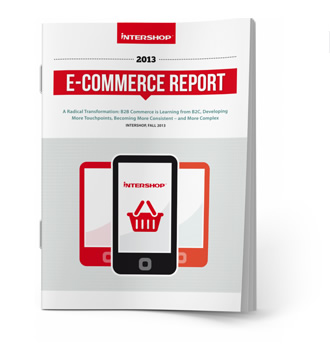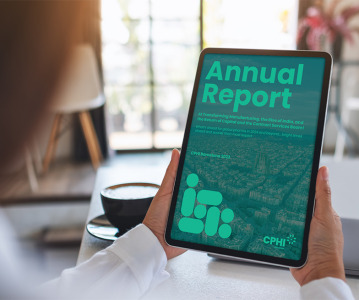Pharmaceutical Companies Struggle to Deliver B2C E-commerce Experience Their Customers Expect

When it comes to selling online, pharmaceutical organisations have to adapt to changing customer expectations, driven by trends such as smartphone usage, social media and the consumerisation of IT, according to the 2013 E-commerce Report from Intershop.
Across the board, respondents in a survey of 400 B2B companies, of which 75% of the respondents were from the automotive, high-tech manufacturing, retail, pharmaceutical, and telecoms sectors, agreed that the world of B2B commerce is evolving fast, and B2C trends are reflected in the B2B environment.
Yet, almost all organisations (97%) in the pharmaceutical sector are facing challenges. For more than half (57%), the biggest challenge is delivering responsive and flexible customer service to respond quickly to any customer request. Just over half (53%) say they find it hard to provide intuitive and user-friendly interfaces for multiple touch points such as their B2B online store, mobile apps etc. Just under half (47%) find it difficult to manage complex organisational structures such as different user roles, multiple business models such as B2B, B2C, B2B2C and B2X, multiple commerce touch points and multiple data domains.
One big challenge is how this change is driven by multiple factors an average of eight in this sector. 90% of pharmaceutical companies said change was driven by business buyers engaging through various offline and online touch points with their peers and using multiple information sources to make decisions. Also significant were Web 2.0 technologies enabling new ways of collaboration and relationship building in the B2B environment (87%).
Yet, more than half (57%) agreed that bringing business buyers from offline to online could result in more return customers/higher brand loyalty and 53% said it could shorten transactions and fulfilment cycles.
Jochen Moll, Member and Spokesman of the Board of Management at Intershop explains: "Where there is complexity, there is also opportunity. Organisations that can develop their B2B commerce channels now and offer a consumer-like approach will be well placed to capture market share. They will need to understand how to manage the complexities around their new channels, but the effort will pay off.”
Of the pharmaceutical B2B organisations surveyed in Europe and the US that already sell online, the average percentage of B2B revenue from online sales is 40%. Of these, 96% are planning to increase the percentage they sell online, by an average 35%.
When it comes to the features needed in a B2B store to offer B2C-like merchandising, more than four in five (83%) pharmaceutical organisations understood the importance of online order approval, as well as intuitive management tools (also 83%). This is followed by online store analytics/monitoring in real time (80%), intuitive search and navigation (77%) and self-service account management (77%).
Keen to support their sales representatives and account managers, 80% of the pharmaceutical businesses interviewed would like customised product, price and catalogue management in their e-commerce platform. The same number (80%) would like to be able to view sales reports such as total sales, or sales value by cost centre.
Conquering Mobile
Intershop's 2012 E-commerce Report revealed that conquering mobile commerce was the top business challenge facing B2C retailers. In the near future, mobile channels will gain in importance in B2B too. In the 2013 report, of those pharmaceutical organisations that say mobile commerce will be important in the next 12 months, a total of 68% are planning to create a mobile-optimised store version that allows business buyers to see products, to purchase, to access their account profile and to track orders. 57% plan to create a mobile app that allows business buyers to see products, to negotiate the price, to click and buy and to track orders.
The findings from the survey underline that the transformation of B2B commerce is hitting a tipping point in 2013. The pressure in B2B is to cope with a large number of challenges and fast changing expectations, both from inside and outside their business: Integrating processes and systems, providing consistent cross-channel experiences and embracing mobile and social media, to name but a few.
"B2C has become the test ground for B2B companies to understand how e-commerce technologies can support their sales strategies," adds Moll. "After all, every B2B customer is also a B2C customer so if you want to understand the future of B2B, that is where to look.”
Moll concludes: "Interestingly, there is a noticeable disparity between countries in terms of how sophisticated their B2B e-commerce strategy is. E-commerce really is a global market place and B2B organisations need to raise their game to meet the highest benchmark."
To download the full report, click here.
Related News
-
News Patients vs Pharma – who will the Inflation Reduction Act affect the most?
The Inflation Reduction Act brought in by the Biden administration in 2022 aims to give better and more equitable access to healthcare in the USA. However, pharma companies are now concerned about the other potential costs of such legislation. -
News CPHI Podcast Series: What does the changing US Pharma market mean for industry and patients alike?
In this week's episode of the CPHI Podcast Series Lucy Chard, Digital Editor for CPHI Online is joined by James Manser to discuss the political and market changes in the US pharma field. -
News CPHI Barcelona Annual Report illuminates industry trends for 2024
The CPHI Annual Survey comes into it’s 7th year to report on the predicted trends for 2024. Over 250 pharma executives were asked 35 questions, with their answers informing the industry landscape for the next year, spanning all major pharma marke... -
News Which 10 drugs are open to price negotiation with Medicare in the USA?
The Centres for Medicare & Medicaid Services, under the Biden administration in the USA, has released a list of the 10 drugs that will be open to price negotiations as part of the new legislation under the Inflation Reduction Act (IRA). -
News EU Medical Devices Regulation causes unintended disappearances of medical devices for children, doctors state
Doctor groups and associations have appealed to the EU to correct the EU Medical Devices Regulation law that may cause unintended shortages of essential drug and medical devices for children and rare disease patients. -
News 10 Major Drug Approvals So Far in 2023
Last year, 37 novel drugs were approved by the FDA, this was a high number for such a category, and covered many fields including oncology, demonstrating how promising further research is, and how it is only continuing to build. To date, there are alre... -
News Detecting Alzheimer's disease with a simple lateral flow test
A novel rapid diagnostic test for early-stage Alzheimer's disease has been developed using a biomarker binder from Aptamer Group along with technology from Neuro-Bio, the neurodegenerative disease experts. -
News CPHI Podcast Series: outsourcing and manufacturing trends
Listen to the CPHI Podcast Series this June to hear Gil Roth of the PBOA speak with Digital Editor Lucy Chard about the biggest trends and topics to watch in pharma outsourcing and manufacturing at the minute.
Position your company at the heart of the global Pharma industry with a CPHI Online membership
-
Your products and solutions visible to thousands of visitors within the largest Pharma marketplace
-
Generate high-quality, engaged leads for your business, all year round
-
Promote your business as the industry’s thought-leader by hosting your reports, brochures and videos within your profile
-
Your company’s profile boosted at all participating CPHI events
-
An easy-to-use platform with a detailed dashboard showing your leads and performance







